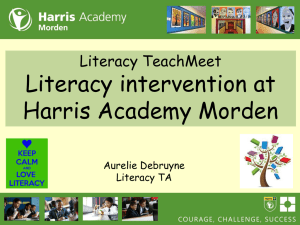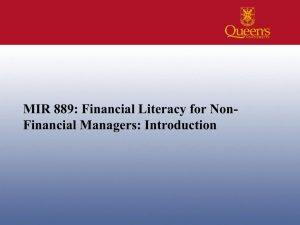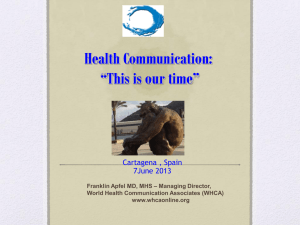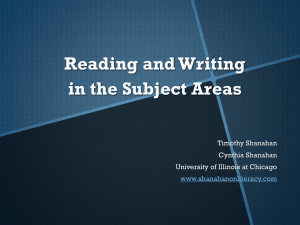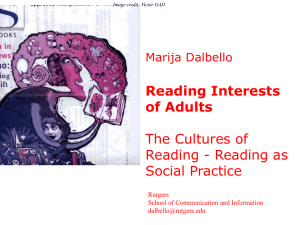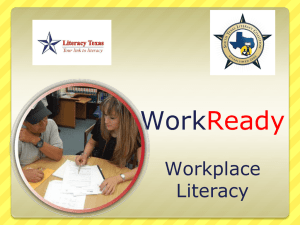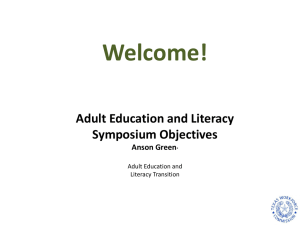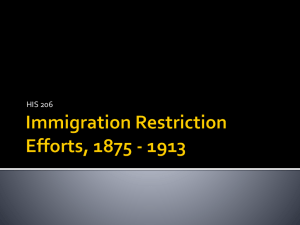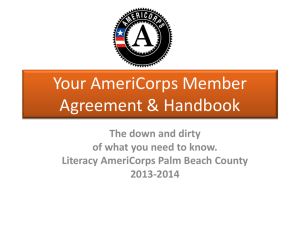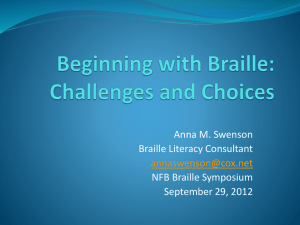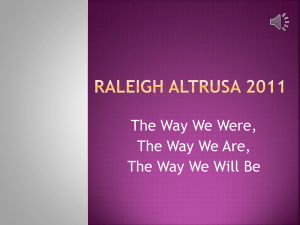Plain Language Sweeping the Plains: Health Literacy initiatives in
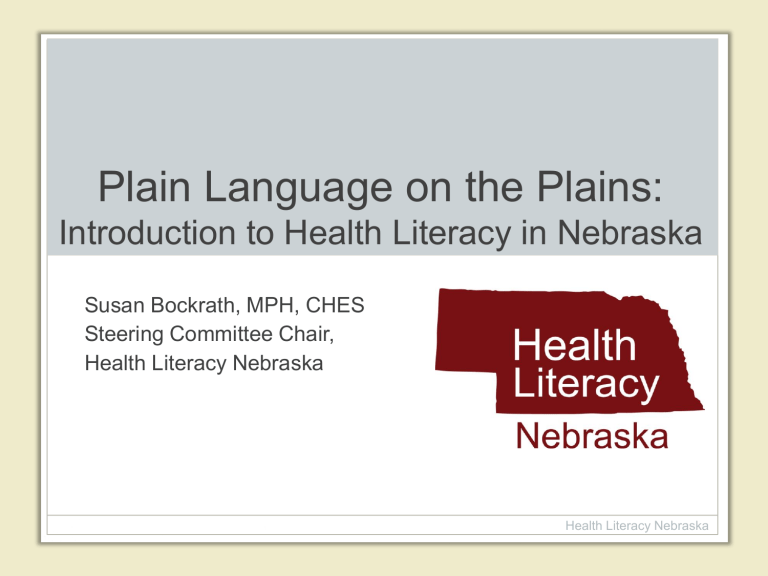
Plain Language on the Plains:
Introduction to Health Literacy in Nebraska
Susan Bockrath, MPH, CHES
Steering Committee Chair,
Health Literacy Nebraska
Health Literacy Nebraska
Scottsbluff
Kearney
Adults with Below Basic Literacy
Percent (%) across Nebraska
100
80
60
40
20
0
Nebraska
Sarpy
Lancaster
Colfax
California
North Dakota
Low Literacy
Health Literacy in America
(NAAL 2003 Data)
Proficient (12%): Define medical terms from complex document, calculate share of employee health insurance.
Intermediate (53%): Determine healthy weight from body mass index (BMI) chart, interpret prescription and over-the-counter drug labels.
Basic (22%): Understand simple patient education handout.
Below Basic (14%): Circle date on appointment slip. Understand simple pamphlet about pre-test instructions .
(
Kutner, Greenberg, Jin, & Paulsen, 2006
)
Health Literacy Nebraska
Health Literacy
“Health literacy allows the public and personnel working in all healthrelated contexts to
• find,
• understand,
• evaluate,
• communicate, and
• use information.”
(Calgary Charter, 2008)
Literacy Demands
Systems &
Organizations
Patient
Skills &
Experience
Provider
Skills &
Experience
Demands of providers and systems
Health Literacy
Skills of patients, clients, communities
11
Demands of providers and systems e t H h l a i t y e L r a c
Skills of patients, clients, communities
How much does
Health Literacy matter?
• Limited literacy and health literacy are associated with negative health outcomes, less knowledge of medical conditions, less use of preventive services, poor disease self management, treatment mistakes, increased hospitalization and hospital readmissions, and death.
(DeWalt, Berkman, Sheridan, Lohr, Pignone, 2004)
Predictors of Health Status
Literacy Skills
• Age
• Income
• Employment Status
• Education Level
• Racial or Ethnic Group
14
Strong Associations Between
Health Literacy and…
Lower educational attainment
Limited exposure to higherlevel language
Limited baseline knowledge
Older age
Diminished cognitive function
Increased medical encounters as one ages
Different expectations related to patient/provider roles
15
Racial or ethnic minority
Consistent with other health disparities
Not attending to Health Literacy
Costs Money
Estimated annual health care costs for people with low literacy are 4 times higher than for those with higher literacy skills.
(Weiss, 1999)
Comparative
Costs
16
Low
Literacy
Higher
Literacy
Not Attending to Health Literacy
Costs Lives
0
Adequate
Marginal
Inadequate
20
Adjusted HR 1.52
(95% CI 1.26 -1.83)
Inadequate vs Adequate
40
Months
60 80
(Baker, Wolf, Feinglass, Thompson, Gazmararian, Huang, 2007)
17
Health Literate Strategies
Literacy Demands
Systems &
Organizations
Patient
Skills &
Experience
Provider
Skills &
Experience
• Plain Language
• Easy-to-Read
• Examples & Visuals
• Brown Bag Checks
• Teach Back
• Ask Me 3
• Interpreters
18
Health Literate Strategies
Literacy Demands
Systems &
Organizations
Patient
Skills &
Experience
Provider
Skills &
Experience
• Plain Language
• Easy-to-Read
• Examples & Visuals
• Brown Bag Checks
• Teach Back
• Ask Me 3
• Interpreters
19
Work to Date
• 230 local and tribal health department staff participated in a baseline survey assessing their perceptions related to the health literacy.
• Project staff visited 19 sites where over 144 staff took part in on-site trainings introducing health literacy and in focus groups and interviews.
OPIHL project staff established a Health Literacy Listserv for collaboration specific to health literacy
Project staff has provided
Health Literate Writers’ Workshops in 4 communities across the state. More than 100 health department staff and community partners participated in these workshops between May 1 and August 1, 2013. A fifth workshop is scheduled in
September 2013.
All participating health departments have been trained in and have at least one license to use Health Literacy Advisor software
www.nalhd.org
Mission
To connect and coordinate health literacy projects and expertise in Nebraska.
Who is ?
• Partnership of:
• Medical providers
• Pharmacists
• Public Health practitioners
• Librarians
• Educators
• Interpreters
• Students
• Consumers
What do we do?
Connect Nebraskans interested in improving health literacy
• Bi-annual Summit
• Multi-disciplinary work groups
• Health literacy training
• Including health literacy items on Behavioral Risk
Factor Surveillance
Survey (BRFSS)
More of what ht does…
• Nebraska-focused training opportunities …..
• Quarterly newsletter coming soon.
• Developing state-level data :
• With partners, ensuring that 2013-2014 Behavioral
Risk Factor Surveillance Survey (BRFSS) in
Nebraska includes 3 questions about health literacy.
• Completed a provider survey in 2012 asking about health literacy perceptions.
Why Join ?
• Be connected to this exciting work!
• Value priced
• $20 annually for individual
• $100 annually for organization
www.healthliteracyne.org
Resources
Find information and links to health literacy resources at… www.healthliteracyne.org
www.nalhd.org/healthliteracy
